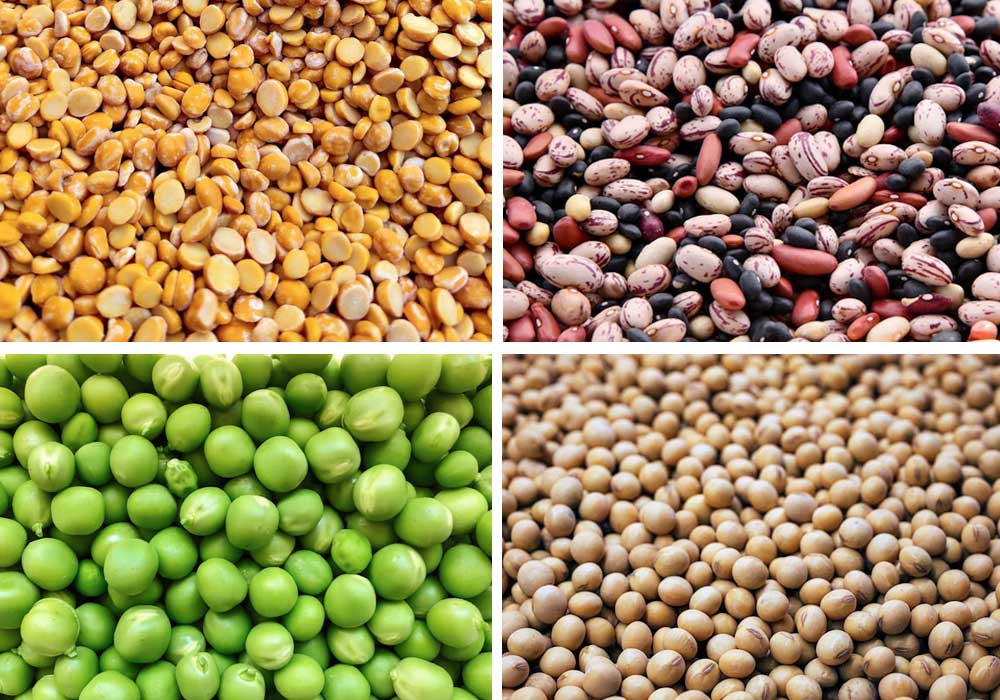Chickpea Sorting Machine
Lentil Sorting Machine
Pea Sorting Machine
Black Bean Sorting Machine
Kidney Bean Sorting Machine
Mung Bean Sorting Machine
Adzuki Bean Sorting Machine
Pigeon Pea Sorting Machine
Fava Bean Sorting Machine
Lupini Bean Sorting Machine
Black-eyed Pea Sorting Machine
Soybean Sorting Machine
Lima Bean Sorting Machine
Coffee Bean Sorting Machine
Peanut Sorting Machine
What is Pulses and Legumes Sorting
Pulses and legumes sorting refers to the precision process of separating various types of beans, lentils, peas, and other legumes based on their color, size, shape, and optical characteristics using advanced color sorters. This technology ensures that only high-quality pulses free from defects, impurities, or discolored particles reach consumers. As nutritional awareness grows globally, pulse sorting has become a critical quality control step in food processing industries.
Modern pulse sorting solutions handle diverse legume varieties including chickpeas, black beans, kidney beans, green lentils, yellow peas, and more. These machines help food processors maintain consistent quality, improve yield, and meet strict international food safety standards. Whether removing foreign materials, sorting by size and color gradations, or eliminating defective beans, automated sorting systems provide unmatched precision compared to manual methods.

How Pulses and Legumes Sorting Works
Pulse sorting machines employ high-resolution CCD optical sensors and advanced imaging technology to analyze each legume as it passes through the system. The sensors capture detailed color and shape information, detecting even minor defects or discoloration. When an undesirable bean or impurity is identified, the machine activates a high-speed air ejection system to remove it from the production line with pinpoint accuracy.
The sorting process begins with feeding pulses into the machine where they are evenly distributed on a chute or conveyor for individual inspection. Sophisticated software processes images in real-time, distinguishing between acceptably clean legumes and those with defects. This ensures only premium quality pulses proceed to packaging, significantly enhancing final product value while reducing waste.
Core Features and Benefits of Pulses and Legumes Sorting
Modern pulse sorting systems offer exceptional accuracy in detecting and removing defects, discolored beans, foreign materials, and even subtle shape variations. These machines can process several tons of legumes per hour, far exceeding manual sorting capabilities in both speed and consistency. Customizable sorting parameters allow adaptation for different legume types and quality requirements, making the technology versatile for processors handling multiple varieties.
Beyond quality control, pulse sorting machines enhance food safety by eliminating potential contaminants like stones or metal particles. They dramatically reduce labor costs while increasing processing throughput, delivering rapid return on investment. The optical sorting method preserves nutritional quality and appearance, maintaining the inherent value of pulses throughout processing.
Technical Specifications of Pulse Sorting Machines
High-performance pulse sorters typically feature full-color CCD cameras with resolutions capable of detecting defects as small as 0.05mm. Processing capacities range from 500kg to 10 tons per hour depending on model and legume type, with ejection accuracy rates exceeding 99%. Many systems incorporate intelligent learning algorithms that continuously improve detection accuracy as the machine processes more material.
Modern pulse sorters come with intuitive touchscreen interfaces for easy operation and parameter adjustments. Many models feature multi-spectral imaging for comprehensive quality control from multiple perspectives. Energy-efficient designs minimize power consumption while delivering maximum performance, and rugged constructions ensure durability in demanding food processing environments.
Applications of Pulse Sorting Technology
Pulse sorting technology serves diverse sectors from large-scale bean processors to specialty lentil packers. It's particularly valuable for premium products where appearance and purity significantly impact market value, such as organic pulses or specialty ethnic varieties. The technology also plays a crucial role in meeting food safety regulations and export standards in international markets.
Beyond direct human consumption, pulse sorters are used in animal feed production to remove potentially harmful impurities. The technology adapts to process everything from common beans and lentils to more specialized varieties like adzuki beans or black-eyed peas with equal efficiency. Some processors even use the technology for final quality checks on packaged products before shipment.
Buying Guide
When selecting a pulse sorting machine, consider the specific legume varieties you'll be processing and their typical defect profiles. Processing capacity should align with production volumes, while machine flexibility is important if handling multiple pulse types. Look for machines with easy-clean designs suitable for food processing and consider the availability of spare parts and local service support.
Advanced features like multiple sorting channels, customizable sensitivity settings, and data logging capabilities can provide significant long-term value. Many manufacturers offer test sorting services to evaluate a machine's performance with your specific products before purchase. Energy efficiency and ease of maintenance should also factor into your decision-making process.
Maintenance Guide
Regular maintenance is essential for optimal pulse sorter performance. Daily cleaning removes dust and legume residues that could affect optical sensors, while periodic calibrations ensure consistent sorting accuracy. Pay special attention to the ejection system components as these are critical to machine performance.
Scheduled professional servicing helps identify wear components before they fail and maintains machine precision over time. Keeping detailed maintenance records aids in predicting part replacement needs and prevents unexpected downtime. Proper storage procedures for seasonal operations protect sensitive components and extend the equipment's operational lifespan.